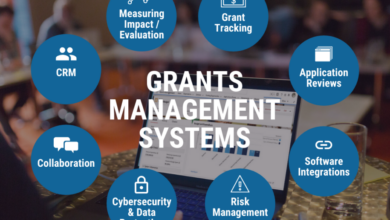Everything You Need to Know About Enterprise Search

What is an Enterprise Searching mechanism, and why should organisations care? This article is intended to answer those questions. After reading this article, you will understand precisely what an Enterprise Search is, why it matters, and how it accomplishes its objectives. Additionally, this article will be advantageous if you are looking for a method to imitate Google’s Search engine experience with internal documents safely secured behind your organisation’s firewall.
For decades, Enterprise Content Management (ECM) vendors and professionals employed within these companies have fought to grasp customer data and deliver it into their proprietary electronic containers. Regrettably, this has frequently meant that significant corporate data ends up in numerous different electronic silos – and the larger the enterprise, the more acute this dilemma transpires.
This leads to a major meaningful obstacle for organisations – their digital content is expanding rapidly, and they have volumes of records scattered across multiple electronic systems, databases and document management applications. Further complicating matters is that each document application will have a different end-user access method. To solve these predicaments, corporations require a standard interface to discover the information so employees can perform their job duties promptly.
This is where an Enterprise Searching Tool can benefit.
Quite simply, an Enterprise Searching Tool is the practice of recognising, classifying, and enabling specific content across the company so as to be indexed, searched, and presented to authorised end-users.
Key electronic content without any end-user access is counterproductive and could be classified as a liability. Enterprise searching permits content to be unlocked by your organisation and can enable end-users to locate the vital information they need, in any format, anywhere within their business. Either in databases or any other electronic document management system. More importantly, the most reliable Enterprise Searching software makes this process particularly easy for end-users.
How Does it Exactly Work?
Enterprise searching comprises diverse sub-systems, and numerous processes occur behind the scenes.
The enterprise searching tool starts by ‘crawling’ over the various electronic shared drives and corporate document repositories within an organisation.
What is created by this process is a ‘searchable index’, permitting a unified searching experience within the end-user’s browser.
This experience is commonly identified as a federated search, which allows end-users to proceed to one electronic location to discover everything (that they have access to) within their organisation.
With this deployed enterprise searching system in position, end users can locate the key content they want to perform their job duties more productively and efficiently.
How Enterprise Searching Works
Enterprises constantly accumulate and assemble data from disparate sources. Some of the familiar sources are electronic files and in-house user interface applications.
Enterprise searching-systems can cope with voluminous data – irrespective of its composition or source. We can divide the enterprise searching process into three distinctive phases:
- Content recognition and automation
- Indexing
- Querying
Content Recognition and Automation
The first action with an enterprise searching installation process is to congregate data from multiple different sources. The enterprise searching tool connects all the various data sources and creates permissions for end-users to facilitate searching. Data is obtained using APIs from these other sources as they do come in multiple formats. Subsequently, the incoming data is transformed into the tools’ internal standard format.
Indexing
An analogy is that the enterprise search is comparable to a book’s index. First, it tells end-users where they can obtain the data they are looking for, and once all information is managed, indexing is completed. Thus, indexing occurs every time more data is added to the searching index. This facility saves the end-users valuable time when they search data.
Querying
This phase provides tangible benefits for end-users. End-user requests have keywords and searching filters, which the search system uses to deliver results. When a search query occurs, the enterprise searching tool proceeds to the indexed data store and matches the present data with the search query. The tool will then deliver the relevant results.
The first two phases can be deemed the electronic foundation of enterprise searching, and the third phase is where the tangible benefits occur – assuming the first two phases were performed successfully.
The Role of Machine Learning and AI
Machine learning, which is a complicated process, is used to train artificial intelligence, and to do this right does take time. For example, in reinforcement training, an algorithm frequently courses through an identical problem and is given a numerical reward only when it reaches the correct answer. This process guides and directs the machine learning algorithm to find the correct answer promptly when positioned against succeeding similar problems.
The key differentiation a machine learning algorithm has compared with the traditional computer software that a human developer has written code for is that the developer explicitly instructs the system to tell the difference between (for example) two objects – say a pen and a pencil.
Instead, a machine-learning algorithmic model will be taught how to dependably distinguish between the items by training how to perform this distinction by ‘learning’ on a large amount of relevant data. More likely, a tremendous number of labelled images bearing pictures of pens and pencils.
A keenly developing commercial subset of machine learning is computational statistics, which focuses on making ‘learned’ futuristic forecasts using algorithmic machine learning. The study of analytical, statistical optimisation delivers eagerly sought theoretical methods to the growing field of machine learning. Data mining is a kindred field of study, focusing on computational data analysis through uncontrolled learning. Remarkable implementations of machine learning use data and neural networks to simulate, or impersonate, the operations of a biological human brain. With its expanding application across diverse business platforms, machine learning is also mentioned as predictive economic analytics.
Adjacent with machine learning, numerous other strategies are being used to strengthen AI systems, including evolutionary estimation, where algorithms share and experience irregular deviations and combinations between generations so as to naturally ‘evolve’ into optimal algorithmic machine learning solutions.
Conclusion
What was once considered extravagance is now necessary for any enterprise seeking to stay competitive in our modern technical workplace. The correct enterprise searching tool will generate revenue by advancing employee data searching experience, and streamlining their working duties. Any deployment of an enterprise searching tool requires deep planning and a concerted effort to perfect the implementation – from both the enterprise and the vendors’ consultants.




